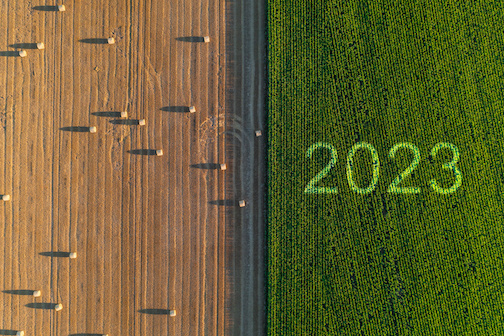Farm Planning Begins with Early Decisions
Jan 10, 2023

One of the first questions to ask in the early winter months is what worked last year, and what needs to be done differently in the upcoming growing season? Brad Hipsag, agronomy sales rep from Federated’s Ogilvie location, said it’s important to evaluate the year objectively.
Early planning should offer a broad view of the upcoming season from start to finish. Were you happy with last year’s seed selection, chemical program, or insecticide/fungicide application? Do you need to add anything to your program to boost yields?
Start by looking at crop rotation. Decide what crop is going in what field. It’s important for growers and Federated Agronomists “to be on the same page,” said Hipsag. Mapping out field locations and boundaries and updating data on FieldAlytics® will help avoid confusion when it’s time to spread fertilizer or spray herbicides.
Then, decide on a fertilizer plan. “I like to make fertilizer recommendations on a field-by-field basis,” said Hipsag. Fertilizer plans are dependent upon many variables: soil tests, fall and/or starter fertilizer applications, soil type, crop, etc. “For corn … we need to know how we are going to manage nitrogen,” he said, which requires careful attention to starter blends.
Seed is the next choice. “When we know how many acres of corn, soybean, alfalfa, oats, wheat, hay, are intended to be planted, we can plan for how much seed we will need,” said Hipsag. Federated Agronomists make seed and seed treatment recommendations based on soil type, yield environment, disease pressure, insect pressure, and other variables.
Whether or not the seed comes from Federated, “we need to know what the seed traits are – conventional corn, Roundup Ready® corn, conventional beans, Roundup Ready® beans, Xtend®, XtendFlex®, Liberty®, LLGT27, Enlist®, or something different,” he said.
Knowing seed traits is critical for crop protection chemical decisions. “If the wrong chemical is used it can mean destroying an entire crop,” said Hipsag. Plans can change in season as scouting and environmental conditions come into play. Communication is vital. “We both need to be 100% on the same page,” he said. Get a base program laid out now for both pre- and post-emerge herbicide applications and adjust as needed as the season progresses.
The last, but certainly not least, pre-season decision relates to budgeting. “Once some of the basics are determined we can get a pretty good idea of what things are going to cost for the year,” said Hipsag. If everyone knows what to expect, there’s time to arrange for financing, credit limit adjustments, etc. Federated is ready to help you achieve your crop goals.
Talk to your Federated Agronomist soon to get pre-season decision making underway.
Early planning should offer a broad view of the upcoming season from start to finish. Were you happy with last year’s seed selection, chemical program, or insecticide/fungicide application? Do you need to add anything to your program to boost yields?
Start by looking at crop rotation. Decide what crop is going in what field. It’s important for growers and Federated Agronomists “to be on the same page,” said Hipsag. Mapping out field locations and boundaries and updating data on FieldAlytics® will help avoid confusion when it’s time to spread fertilizer or spray herbicides.
Then, decide on a fertilizer plan. “I like to make fertilizer recommendations on a field-by-field basis,” said Hipsag. Fertilizer plans are dependent upon many variables: soil tests, fall and/or starter fertilizer applications, soil type, crop, etc. “For corn … we need to know how we are going to manage nitrogen,” he said, which requires careful attention to starter blends.
Seed is the next choice. “When we know how many acres of corn, soybean, alfalfa, oats, wheat, hay, are intended to be planted, we can plan for how much seed we will need,” said Hipsag. Federated Agronomists make seed and seed treatment recommendations based on soil type, yield environment, disease pressure, insect pressure, and other variables.
Whether or not the seed comes from Federated, “we need to know what the seed traits are – conventional corn, Roundup Ready® corn, conventional beans, Roundup Ready® beans, Xtend®, XtendFlex®, Liberty®, LLGT27, Enlist®, or something different,” he said.
Knowing seed traits is critical for crop protection chemical decisions. “If the wrong chemical is used it can mean destroying an entire crop,” said Hipsag. Plans can change in season as scouting and environmental conditions come into play. Communication is vital. “We both need to be 100% on the same page,” he said. Get a base program laid out now for both pre- and post-emerge herbicide applications and adjust as needed as the season progresses.
The last, but certainly not least, pre-season decision relates to budgeting. “Once some of the basics are determined we can get a pretty good idea of what things are going to cost for the year,” said Hipsag. If everyone knows what to expect, there’s time to arrange for financing, credit limit adjustments, etc. Federated is ready to help you achieve your crop goals.
Talk to your Federated Agronomist soon to get pre-season decision making underway.